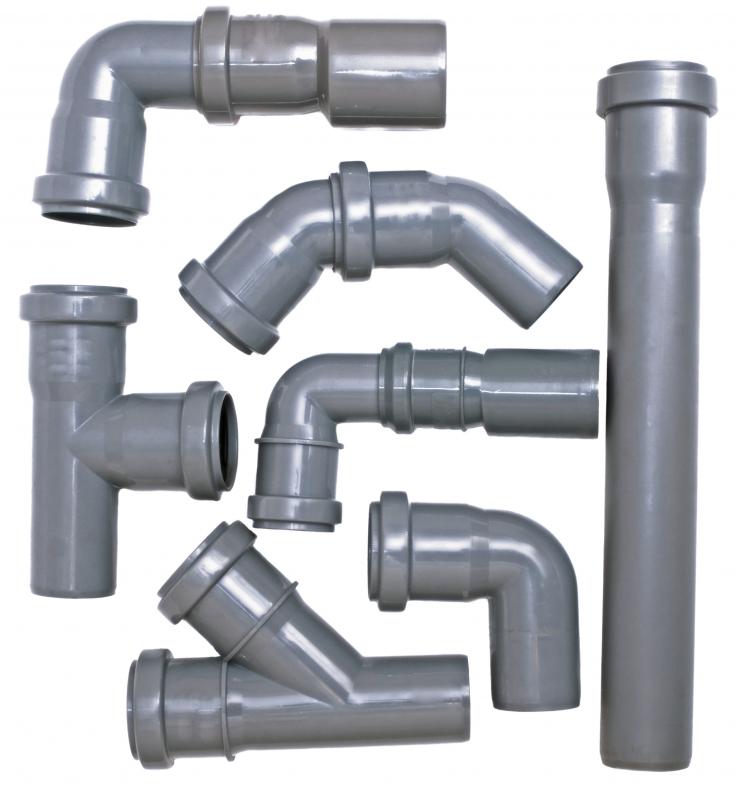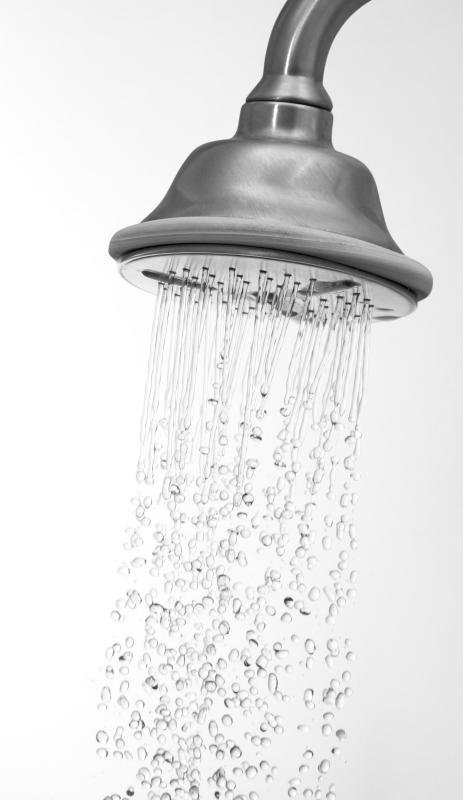At WiseGEEK, we're committed to delivering accurate, trustworthy information. Our expert-authored content is rigorously fact-checked and sourced from credible authorities. Discover how we uphold the highest standards in providing you with reliable knowledge.
What is Green Plumbing?
Homeowners everywhere are looking for ways to improve the sustainability of their homes and reduce their personal carbon footprint in a movement that has been termed green living. The area of the home that may benefit the most is the water and sewer system, which has led to an increased awareness of green plumbing. Green plumbing is a broad term, but the overall goal of every use of the word is the same: to reduce water usage, recycle water that has already been used and use sustainable materials to do so, if possible.
There are two areas in every home that consume large amounts of water on a regular basis, the bathroom and the kitchen. These areas are most commonly referred to when the subject of green plumbing is addressed. Household appliances, namely washing machines, also make use of water, and there are a variety of commercial solutions to reduce the amount of water used in the washing of clothing and other household items. Those who focus on sustainable living may choose to forgo a washing machine and hand wash items exclusively.

There are a number of things that can be done in the bathroom to reduce water usage. The installation of a low-flow shower head, a low-flow toilet or a dual-flush toilet can all be steps toward utilizing the concepts of green plumbing in the average house. While there are commercial solutions for do-it-yourself overhauls, there are also home remedies, such as placing a jar of rocks in the tank of a toilet to reduce the amount of water that is sent to the toilet bowl.

The recycling of water used during baths or showers, termed gray water collection, is also an aspect of ecologically sound bathroom plumbing. A gray water collection system can be as elaborate as installing a separate collection tank or as simple as taking a bucket into the shower each time it is used. The water can then be used to water plants or for other uses that do not require the direct consumption of the water. Another popular home solution involves regulating the number of times a toilet is flushed, but this is not for the faint of heart.

Ecologically friendly home plumbing also concentrates on the kitchen. Low-flow faucets, water pressure regulators, water heater regulators and the use of dishwashing machines are all steps that can be taken to make kitchen water usage less harmful to the environment. While the use of an appliance such as a dishwasher may seem counterintuitive, when used properly, it actually requires less water and energy than washing dishes by hand.
AS FEATURED ON:
AS FEATURED ON:














Discussion Comments
@KoiwiGal - Really it's best if you combine the two approaches.
Install green plumbing solutions as well as changing other things to make your energy use more efficient.
I know at the moment it just feels like a sacrifice, but huge numbers of cities are running out of water at the moment. It's not a problem that is going to be easily fixed, particularly for those cities which are situated in areas away from the sea. Once the aquifers are gone, they are basically gone forever.
So, you should get a head start on conserving water, because it is going to be a way of life for most people in the coming decades.
@croydon - Well, there's another way to keep your hot showers but not have to worry about wasting power. You can install a more efficient water heater.
There are lots of different options depending on how much you want to spend, where you live and how efficient you're hoping to be.
I know my grandfather managed to put in a heating system that basically harnessed solar energy by using black pipes. It meant that much less energy was used to heat water even in the winter.
And we use a gas water system, which heats the water as we use it, rather than keeping a reservoir of hot water waiting to be used. That uses the most power.
Of course that doesn't solve the problem of using too much water, those sorts of green plumbing fixtures just make it so that you aren't using as much electricity.
There are all kinds of ways you can be more environmentally friendly without having to make major changes in the way you do things.
Often we're overusing hot water, which uses up power and so cutting back will help your wallet as well as the environment.
A big one is taking short showers instead of baths. I have friends who live in cities where there are often water shortages (like Perth in Australia) and they are only allowed to have three minutes of shower time per household member.
You don't have to cut back that drastically, but even a few minutes less will mean a lot of water savings.
And if you ever plug the bath while you've got the shower running you realize how long it takes to fill up. So, using a bath is much more wasteful than using a shower.
One of the other changes people can make is not running the tap when you don't need to. Like, running it while you're brushing your teeth, or to clean a bunch of dishes, rather than filling the sink. Changing the plumbing isn't the only way to make a difference.
Post your comments